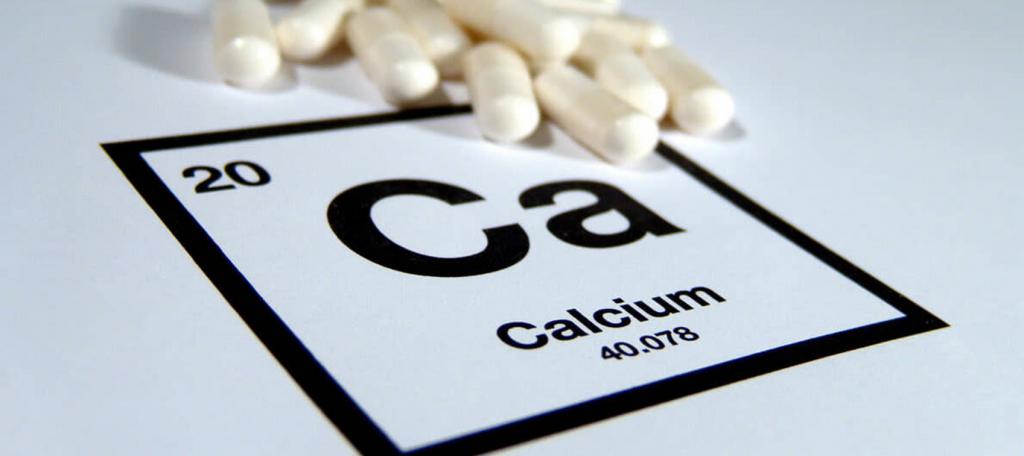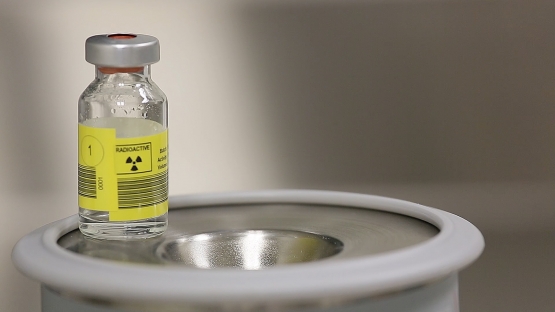Hypercalcemia is a dangerous condition for the body, and even a slight excess of its value, recognized as the norm, requires attention. Excess calcium can adversely affect the functioning of most organs, including the most important, such as the brain, kidneys, and heart.
Hypercalcemia - what is it?

Hypercalcemia is a condition where the concentration of calcium in the blood is too high. This element plays an important role in the proper functioning of the body. Even children are aware of this. Parents, teachers encourage them to drink milk and explain that it contains a trace element, thanks to which they will grow and have healthy and strong bones. In the human body, 99% of the calcium resources are in the bones and only 1% is in the blood. The trace element affects not only the bones, but also the proper functioning of the heart, muscles, nervous system and blood coagulation process. But with excessive ingestion of calcium carbonate salts and an excess of hydrochloric acid in the stomach, an increased absorption of the element from the intestine and its reduced excretion through the kidneys are observed. If this condition is chronic, it leads to the deposition of calcium on the cornea, in the kidneys, the gastric mucosa, connective tissue surrounding the joints, as well as the vascular wall.

Hypercalcemia and Cancer
During many neoplastic diseases, bone structure destruction processes occur. Osteolysis causes bone metastases. Often, bone cancer results from multiple myeloma, oncology of the breast, prostate, lung cancer, thyroid cancer, and bladder. Bone metastases can also occur with other tumors.
Causes
The most common causes of excess calcium are:
- Excessive absorption of an element from the gastrointestinal tract.
- Overdose of Vitamin D.
- The endogenous production of vitamin D by cells of certain tumors (e.g., Hodgkin's disease) or in chronic diseases (e.g., sarcoidosis).
- Excessive mobilization of bones.
- Bone tumors.
- Excessive secretion of parathyroid hormone, growth hormone, thyroxine, adrenaline.
- Long-term immobilization leads to increased output of calcium from the bones.
- Hypervitaminosis A.
- Use of drugs, such as thiazides.
- Iron poisoning.
Tumor tissue can secrete parathyroid hormone (PTH), which leads to an excess of calcium. In women, the symptoms of hypercalcemia usually appear in breast, ovarian, and kidney cancer.
Classification
The clinical distribution of hypercalcemia depending on the concentration of calcium in the blood is as follows:
- light (<3.2 mmol / l);
- moderate (3.2-3.4 mmol / l);
- heavy (> 3.4 mmol / l).
Hypercalcemic crisis is a life-threatening condition (≥ 3.7 mmol / L).
Studies with excess calcium in the blood
- The concentration of ionized calcium is a more accurate marker of the severity of hypercalcemia. The laboratory norm is 1-1.3 mmol / L.
- The concentration of creatinine, chlorides, phosphates, magnesium to assess kidney function.
- PTH concentration.
- Concentration of Vitamin D Metabolites
- Alkaline phosphatase concentration for evaluating bone resorption.
If excess calcium is associated with low PTH levels, you should consider whether cancer is the cause. To clarify this situation, you should contact an oncologist as soon as possible.
If hypercalcemia is accompanied by elevated levels of PTH, the cause is most likely hyperparathyroidism. To cure the disease, it is better to consult an endocrinologist.
Symptoms
Hypercalcemia in itself is a symptom of many serious diseases, in addition, exposure to internal organs can be dangerous and irreversible.
Symptoms of excess calcium:
- impaired renal function: causes polyuria, dehydration, increased excretion of the element with urine, which leads to kidney stones;
- gastrointestinal disorders: nausea, vomiting, loss of appetite, constipation, peptic ulcer of the stomach or duodenum, acute pancreatitis. Very often a metallic taste appears in the mouth;
- cardiovascular symptoms: hypertension, tachycardia (increased heart rate), arrhythmia (irregular heartbeat),
- symptoms of the central nervous system: headache, drowsiness, even coma;
- neuromuscular symptoms: muscle weakness, facial paralysis.
If the concentration of trace elements in the blood exceeds 3.7 mmol / l, hypercalcemic crisis occurs. This is a set of dangerous symptoms with impaired consciousness, severe abdominal pain, vomiting and nausea, polyuria, leading to dehydration, arrhythmias (ECG changes can even mimic a heart attack) and coma.
Treatment
After detecting symptoms of excess calcium in the body , the cause (illness) should be determined and this condition treated. After therapy, it is recommended that laboratory tests be repeated to test the effects of treatment.
Therapy should be started by giving the body a large amount of fluid. It is best to use a 0.9% NaCl solution because elevated serum calcium levels are often accompanied by hyponatremia. According to estimates, with advanced hypercalcemia, the fluid deficiency is 3-6 liters. Typically, 3-4 L of 0.9% NaCl is administered in the first 24 hours, and on the following days, 2-3 L / 24 hours. Good hydration is necessary to improve renal flow and allows Furosemide to lower serum calcium, but this is only effective in 15% of patients. The amount of fluid should be adjusted individually depending on the state of blood circulation and kidneys. Subcutaneous irrigation (hypodermolysis) is sometimes used instead of oral or intravenous administration.
The next step in the fight against hypercalcemia is the use of bisphosphonates to reduce the activity of osteoclasts. Particularly effective are nitrogen bisphosphonates, i.e. pamidronate, alendronate and zolendronate and clodronate.
Calcitonin is another drug that lowers serum calcium. It interferes with the function of osteoclasts and stops the reabsorption of trace elements in the tubules of the kidneys. An increase in its excretion leads to a quick therapeutic effect. Due to the short-term action caused by tachyphylaxis, which often occurs after a week, calcitonin is used only at the beginning of treatment or in combination with bisphosphonate. Combination therapy is recommended for hypercalcemia above 3.5 mmol / L. The use of corticosteroids is recommended mainly in case of overproduction of vitamin D3. The usual use of oral phosphates is not recommended due to the possibility of calcification of tissues and diarrhea.

Radioactive isotopes (their introduction) is another treatment for hypercalcemia caused by cancer. Selectively, they accumulate in the bones due to their affinity for phosphorus compounds and destroy cancer cells by irradiating them. Unlike classical radiation therapy, radiation is focused only in the immediate vicinity of the skeleton, which avoids the irradiation of healthy tissues. Isotopes of strontium, iodine, phosphorus and yttrium are used. Iodine is mainly used to treat bone metastases in oncology of the thyroid gland and prostate gland. The most commonly used strontium isotope effectively reduces pain in 80% of patients, the analgesic effect lasts six months or longer.
Symptomatic treatment
The main goal of symptomatic treatment is to alleviate the symptoms associated with hypercalcemia. Supportive therapy affects not only the quality, but also the life expectancy of patients with bone metastases. The most common cause of symptomatic treatment is the occurrence of pain. These pains are constant, they are often strong and negatively affect the comfort of a patient's life. In the treatment of pain, a three-stage so-called analgesic ladder is used. The beginning of treatment is carried out with narcotic drugs with a gradual increase in their dose and a transition to the next group of drugs if the pain persists. It is very important that you follow your doctor’s instructions and take your medicine at certain times. Pain medications are recommended along with supportive medications. These include anticancer drugs (steroids).
Excess Calcium and Diet: What foods should be avoided?
In the treatment of hypercalcemia, an appropriate diet is also recommended - low in calcium and rich in phosphorus. Phosphates increase the release of trace elements from the body. People with this condition should limit their intake of yellow cheese, cottage cheese, white beans, and sesame.
According to doctors, an excess of calcium carbonate in the joints can be triggered by the constant use of hard water with a high content of this element. Hard water also leads to the formation of kidney stones and bile ducts. Therefore, it is recommended to drink filtered soft water and introduce a restriction of drinking mineral water, which also contains many trace elements.
It should be remembered that such a diet contributes to obesity, so small but regular meals are recommended. Excluding calcium, you should be mindful of the need to provide the body with the remaining essential nutrients, such as protein, fats, carbohydrates, vitamins, and mineral salts.